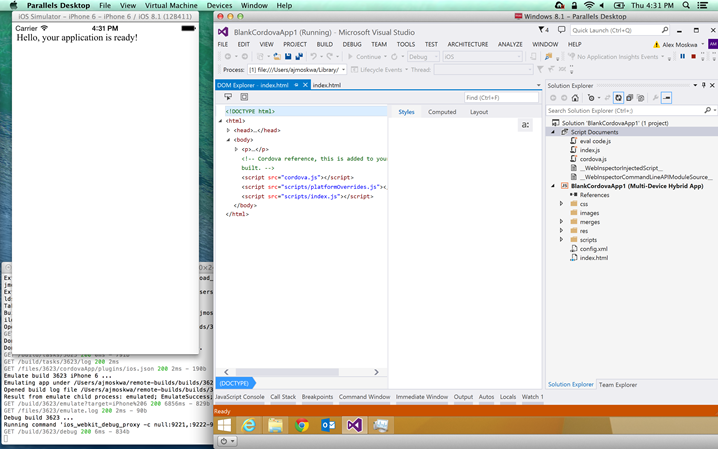

Cordova.js provides the interface to internal features of Cordova, the most important of which is the Cordova plug-in manager. This file is dynamically created for each device platform by Cordova when it builds your project and is injected at runtime. The only difference is that you also load a generated cordova.js script file on startup. Control is then transferred into the WebView that hosts your HTML-based application.Ĭordova Web apps are plain HTML5 applications that typically launch an index.html page. When the app is started, this shell initially handles interaction with the mobile OS to display the splash screen and startup of the host container. These settings and resources along with your application's HTML, scripts, images, and other resources are packaged into a single executable package that can be deployed to an app store. This includes core settings like the app name and operating modes supported (orientation, sizing, etc.) as well resources like the splash screen and home screen icons. The Cordova host container provides the resources required for the host OS to load and bring up the app on the device. Your Web application then runs inside of this WebView control on the mobile device, which effectively lets you build HTML5 based mobile applications. As a developer, you implement the Web interface using the same Web technologies you use for Web development: HTML5, CSS, and JavaScript, as well as any support libraries and frameworks you might be using. How Cordova WorksĬordova works by providing a native device application that hosts a full-screen Web browser control. In this article, I'll give an overview of Cordova and the Visual Studio integration, as well as providing an example to walk you through the creation of a Cordova app by turning an existing mobile aware Web browser application into a Cordova app.Ĭordova lets you use HTML5, CSS, and JavaScript to build mobile apps that can be deployed in mobile app stores.

Microsoft recently released a preview release of the Visual Studio Tools for Apache Cordova that provides excellent integration for building Cordova applications. Rather than creating native applications that are targeted specifically for each mobile device platform, Cordova lets you use HTML5, CSS, and JavaScript to build mobile apps that can be targeted at all device platforms simultaneously and can be deployed into mobile app stores. Say Hello to Apache CordovaĪpache Cordova, formerly known as PhoneGap (see Cordova and PhoneGap Sidebar), offers cross-over technology that lets you use standard Web technologies to build mobile apps. When I talk to developers that aren't doing mobile yet, the biggest concern and confusion I hear is addressing this multi-platform world. In essence, it means two or three or more applications have to be built and maintained. The problem with native development is that you have to build for each platform specifically using the respective SDKs and languages for each platform.
#Cordova and visual studio for mac android
At the very least, mobile apps have to support the iOS and Android platforms and perhaps also Windows Phone as a distant third platform. Yet the reality is that even if you can build a rich Web application, mobile users - especially the non-technical ones - tend to look for apps first and expect applications to come from an app store.īuilding native mobile applications can be very painful as you have to support multiple mobile platforms. Browser technology has improved steadily to make it quite possible to build rich mobile Web applications relatively easily even though there are some limitations when it comes to device integration. If you're a Web dev you've probably noticed that there's an over-emphasis these days on building native mobile applications, even when you have the ability to build rich Web applications that work great in mobile browsers.

#Cordova and visual studio for mac software
Mobile applications continue to be the hottest topic in software development.


 0 kommentar(er)
0 kommentar(er)
